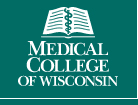Autologous and Allogeneic Transplant for Relapsed Lymphoma
| Status: | Completed |
|---|---|
| Conditions: | Lymphoma |
| Therapuetic Areas: | Oncology |
| Healthy: | No |
| Age Range: | Any - 55 |
| Updated: | 3/29/2019 |
| Start Date: | June 2003 |
| End Date: | October 22, 2014 |
Sequential Myeloablative Stem Cell Transplantation and Reduced Intensity Allogeneic Stem Cell Transplantation in Patients With Refractory or Recurrent Non-Hodgkin's Lymphoma and Hodgkin's Disease
The sequential combination of myeloablative therapy and autologous stem cell transplantation
(APBSCT) followed by a reduced intensity allogeneic stem cell transplant (Allo SCT) and post
SCT adoptive cellular immunotherapy will be well tolerated in patients with refractory or
recurrent non-Hodgkin's lymphoma (NHL) and Hodgkin's disease (HD).
(APBSCT) followed by a reduced intensity allogeneic stem cell transplant (Allo SCT) and post
SCT adoptive cellular immunotherapy will be well tolerated in patients with refractory or
recurrent non-Hodgkin's lymphoma (NHL) and Hodgkin's disease (HD).
Lymphomas are the third most common group of cancers in children and adolescents in the
United States. While Hodgkin's Disease (HD) has been described for many years, some subtypes
of the non-Hodgkin's Lymphomas (NHL) have only recently been described. Non-Hodgkin's
lymphomas traditionally have been classified as low, intermediate or high grade based on
their clinical aggressiveness. More recently they have been divided into two major subgroups
indolent and aggressive lymphomas by the current National Cancer Institute (NCI/PDQ)
reference. Among children, aggressive histologies are prevalent including small non-cleaved
cell lymphoma, lymphoblastic lymphoma, and diffuse large cell lymphoma. The most common
histologic classifications of childhood non-Hodgkin's lymphoma over the past 30 years has
included the morphological schema developed by Rappaport, the morphologically and
immunologically based schema of Lukes and Collins, the Kiel classifications, the prognostic
sub-groupings of the National Cancer Institute's Working Formulation, and the most recently
developed classification that utilizes morphological, immunophenotypic and genetic
information in the Revised European-American Lymphoma (REAL) classification.
United States. While Hodgkin's Disease (HD) has been described for many years, some subtypes
of the non-Hodgkin's Lymphomas (NHL) have only recently been described. Non-Hodgkin's
lymphomas traditionally have been classified as low, intermediate or high grade based on
their clinical aggressiveness. More recently they have been divided into two major subgroups
indolent and aggressive lymphomas by the current National Cancer Institute (NCI/PDQ)
reference. Among children, aggressive histologies are prevalent including small non-cleaved
cell lymphoma, lymphoblastic lymphoma, and diffuse large cell lymphoma. The most common
histologic classifications of childhood non-Hodgkin's lymphoma over the past 30 years has
included the morphological schema developed by Rappaport, the morphologically and
immunologically based schema of Lukes and Collins, the Kiel classifications, the prognostic
sub-groupings of the National Cancer Institute's Working Formulation, and the most recently
developed classification that utilizes morphological, immunophenotypic and genetic
information in the Revised European-American Lymphoma (REAL) classification.
Inclusion Criteria:
Patient must have adequate organ function as below
- Adequate renal function defined as:
1. Serum creatinine less than or equal to 2.0 x normal, or
2. Creatinine clearance or radioisotope glomerular filtration rate (GFR) >= 40
ml/min/m2 or >60 ml/min/1.73 m2 or an equivalent GFR as determined by the
institutional normal range
- Adequate liver function defined as:
1. Total bilirubin <2.0 x normal; or
2. Serum glutamic-oxaloacetic transaminase (SGOT) (aspartate aminotransferase (AST))
or serum glutamic-pyruvic transaminase (SPGT) (alanine aminotransferase (ALT))
<5.0 x normal
- Adequate cardiac function defined as:
1. Shortening fraction of >27% by echocardiogram, or
2. Ejection fraction of >47% by radionuclide angiogram or echocardiogram
- Adequate pulmonary function defined as:
1. Diffusing capacity of the lungs for carbon monoxide (DLCO) >50% by pulmonary
function test for autologous transplant
2. DLCO > 40% by pulmonary function test for reduced intensity allogeneic transplant
3. For children who are uncooperative, no evidence of dyspnea at rest, no exercise
intolerance, and a pulse oximetry >94% in room air.
Disease Status (Eligibility)
- Patients with Non-Hodgkin's Lymphoma with either of the following:
1. Primary induction failure (failure to achieve initial CR) who have a partial
response (PR) or stable disease (SD) with reinduction chemotherapy. *All patients
are required to have a biopsy regardless of positron emission tomography
(PET)/Gallium results.
2. Patients with 1st PR, 2nd CR, 2nd PR, or 2nd SD following reinduction
chemotherapy
3. Patients with 3rd CR, 3rd PR, 3rd SD following reinduction chemotherapy
- Patients with Hodgkin's Disease with either of the following:
1. Primary induction failure (failure to achieve initial CR) and/or primary
refractory disease.
2. First relapse
1. Early relapse (within 12 months off therapy) (excluding those who received
no therapy or radiation therapy only for initial therapy)
2. Late relapse (greater than 12 months off therapy). Only patients with
recurrent Stage III or IV disease and/or those with B symptoms at relapse
(all other late relapses are excluded).
3. Second relapse.
4. Third relapse.
- Patients must achieve a CR, PR or SD after reinduction chemotherapy.
Exclusion Criteria:
- Patients with NHL or HD with 4th or greater CR, PR, and/or SD
- Patients with progressive disease (PD) unresponsive to reinduction chemo, radio, or
immunotherapy
- Hodgkin's Disease in late relapse (other than those discussed above).
- Patients with post-transplant lymphoproliferative disease following a solid organ
transplantation or AIDS associated NHL
- Patients who don't have an eligible donor
- Women who are pregnant
We found this trial at
6
sites
Duke University Younger than most other prestigious U.S. research universities, Duke University consistently ranks among...
Click here to add this to my saved trials
New York Medical College The College was founded in 1860 by a group of New...
Click here to add this to my saved trials
Children's Memorial Hospital, Chicago Ann & Robert H. Lurie Children
Click here to add this to my saved trials
Hackensack University Medical Center Hackensack University Medical Center, part of the Hackensack University Health Network,...
Click here to add this to my saved trials
Medical College of Wisconsin The Medical College (MCW) of Wisconsin is a major national research...
Click here to add this to my saved trials
Columbia University Medical Center Situated on a 20-acre campus in Northern Manhattan and accounting for...
Click here to add this to my saved trials





